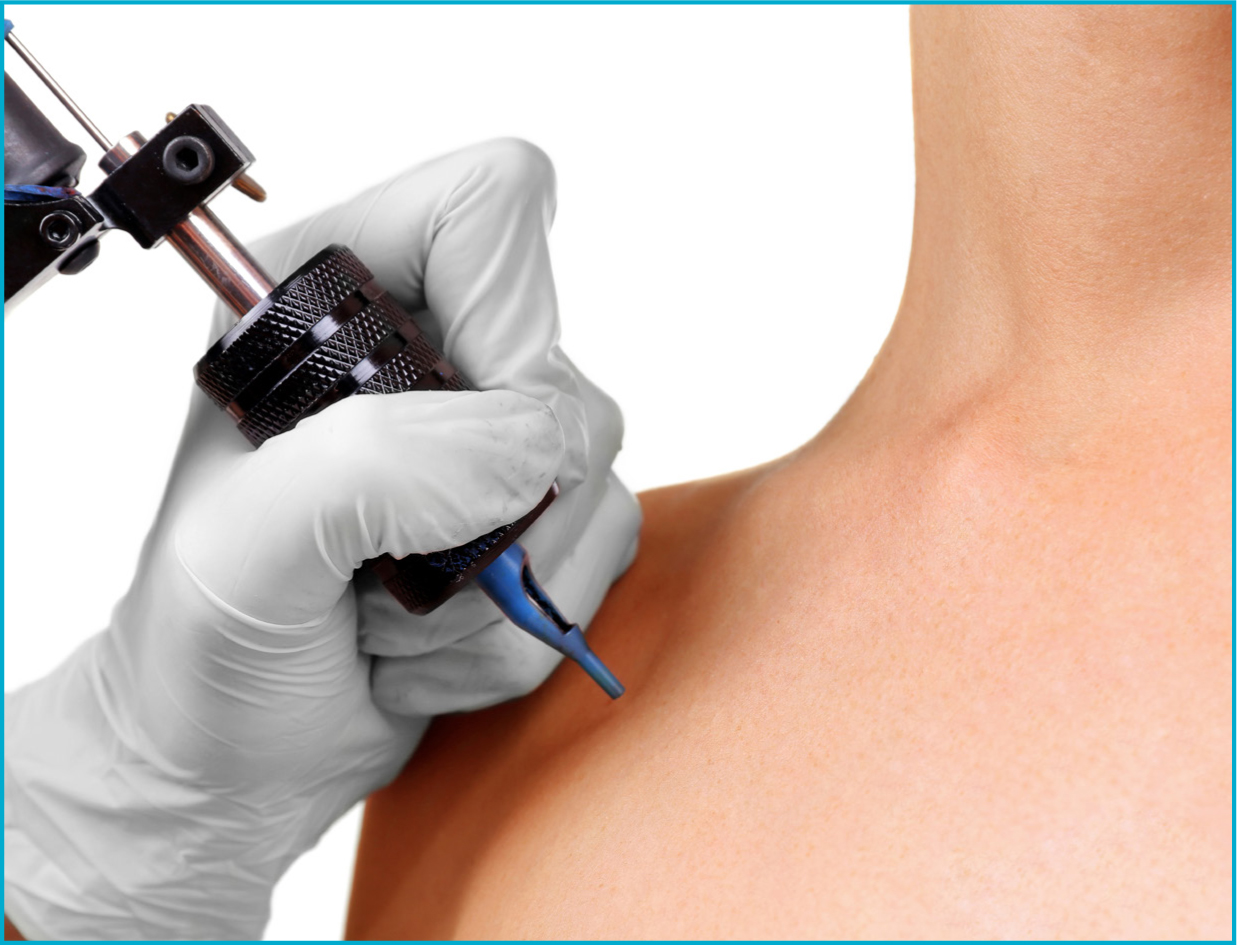


Deliberate self-harm (DSH) scar management poses a complex and multifaceted challenge. Rates of DSH have been on the rise worldwide, with female adolescents among the most prevalent demographic, albeit with a notable rise among males (Carr et al, 2016). An understanding of the psychological aspects that underpin self-injury behaviour is a key starting point in tailoring a successful management plan within a multidisciplinary framework for patients seeking treatment.
Background
DSH entails infliction of self-injury in the absence of suicidal intent for the large majority of patients. However, it is important to note that DSH is a recognised risk factor for suicide in a subset of individuals in whom the self-harm may carry an escalating pattern akin to rehearsal for suicide, especially if the underlying cause is left untreated or undetected (Singhal et al, 2014). For the vast majority of patients who self-harm with no intent to end their life, the underlying motives can be multifactorial; the severity of the self-harm is best viewed as a spectrum entailing minor injury on one end to severe and, on occasions, accidentally limb or life-threatening self-harm on the other (Greydanus and Apple, 2011). The most common form of DSH encountered in clinical practice involves skin injury with sharp objects affecting the non-dominant upper limb (Zahl and Hawton, 2004; Greydanus and Apple, 2011).
One of the common psychodynamic causes underlying DSH is a failure of healthy coping mechanisms, with individuals describing a form of ‘release from anxiety and low mood’ and a unique modicum of ‘control’ at a given point in time (Ho et al, 2018). It has been also reported that some patients experience an analgesic and euphoric effect arising from injury and bleeding contrary to one might presume (Derouin and Bravender, 2004). Other forms of DSH are driven by acute psychotic episodes such as those encountered in schizophrenic patients with paranoid delusions (Singhal et al, 2014).
The psychology of self-harm
Pertinent to our current times, the rising prevalence of DSH in adolescent populations has been attributed to the ‘contagion’ factor, according to which, a patient's self-injury behaviour is initiated after witnessing or hearing of another's through popular culture and social media (Derouin and Bravender, 2004).
Another critical aspect inherent to the psychology of DSH is the dynamics of treatment, especially surgical scar management. Most surgeons and clinicians treating DSH scars opt for a minimum period of remission established in communication with the patient and the mental health team within the multidisciplinary framework. A failure to establish this prior to embarking on scar management is risky for a number of reasons. Patients who self-harm within acute psychotic episodes may pose a risk to themselves or others, and thus, scar treatment is a contraindication at this stage of the illness. The risk that is subtle, but equally significant, is patients who may use scar treatment or surgery as a method to symbolically re-enact the trauma that is associated with mental or psychiatric illness that has not been addressed appropriately. The surgeon-patient relationship involves an implicit power dynamic that can be mishandled by both parties, and, to an unsuspecting clinician, the DSH patient with an untreated ailment underlying the self-harm may channel their mental trauma through the dynamics and physical trauma of surgical treatment (Derouin and Bravender, 2004; Ho et al, 2018). Patients who experience guilt and anxiety associated with recovery or relapses following long periods of remission also pose another challenge, as they may reinstigate DSH or re-open almost healed wounds or scars (Ho et al, 2018; Derouin and Bravender, 2004). A thorough assessment of the patient's insight towards their self-harming behaviour guides whether scar treatment is suitable, as a failure to display insight is a red flag and a potential contraindication for scar treatment, as it may exacerbate the aforementioned complex dynamics.
 Dermabrasion is a treatment that is more suited for scars with an abnormal texture and pigmentation pattern
Dermabrasion is a treatment that is more suited for scars with an abnormal texture and pigmentation pattern
Non-surgical modalities
A summary of common non-surgical modalities incorporated in DSH scar management is presented below.
Camouflage makeup
Camouflage makeup involves the use of medical grade pigmented products that are applied with a view to ameliorating the color contrast between scars and the surrounding skin. This modality is ideal for the coverage of small scars or dark/erythematous areas, which might be challenging to treat by other means. Disadvantages include the need for repeat application and an inability to adequately camouflage areas with marked contour irregularity.
Decorative tattooing
Decorative tattooing is suitable and successful for patients aiming to cover existing scars with a pigmented pattern. In the authors' collective experience, it tends to appeal to a relatively small proportion of patients, and its uptake strongly correlates with cultural attitudes to tattoos in general.
 Re-pigmentation of a scar can be extremely effective
Re-pigmentation of a scar can be extremely effective
Medical tattooing
Re-pigmentation of a scar with a similar shade of color compared to the patient's skin tone can be extremely effective at disguising scars. Colours are chosen from the pigment range and applied using the pointillism method with a fine needle. With re-pigmentation, patients are usually expected to have between two to four sessions that are spaced around 6 weeks apart. Some patients may not be ideal candidates for these treatments if they have certain skin conditions, such as eczema or psoriasis, or the index scars are red/hypertrophic (Guyuron and Vaughan, 1995). Top-up treatment may be required over the years following the original course.
Dermabrasion
Dermabrasion relies on removal of the epidermis and a variable depth of dermis and can be accomplished with a number of different adjuncts, including a gyrating burr or an abrasive medical grade sponge. It is more suited for scars with an abnormal texture and pigmentation pattern. One of the disadvantages of this technique relates to a degree of unpredictability of the final scar relating to depth of dermabrasion.
Lasers
Lasers, including erbium fiber and carbon dioxide modalities, have been used in a small number of studies to ameliorate DSH scar patterns (Lee et al, 2016; Guertler et al, 2018). The underlying principle of action is the creation of minute areas of damage in the scarred field (microthermal damage zones) and the stimulation of a wound-healing collagen remodelling response. This modality appears to be more suitable for isolated scars, as well as an adjunct following surgical revision options.
Microneedling (percutaneous collagen induction)
Microneedling (percutaneous collagen induction) is an increasingly popular non-surgical modality in the toolbox of managing DSH scarring. The treatment involves the use of a device to a stretched area of scarring in a repetitive manner in various directions until pinpoint bleeding is achieved. The controlled trauma that is induced by the process results in a localised inflammatory response, which eventually leads to epidermal regeneration and collagen remodelling (Fernandes, 2002; Iosifidis and Goutos, 2019). The treatment is usually carried out as a course of around five to six sessions and using a range of manual, motorised or radiofrequency-coupled devices available (Alster and Graham, 2018). In the senior author's experience, using larger needles with a 2.5–3 mm range achieves deep enough penetration and has the potential to maximise the resulting regenerative response.
Surgical modalities
Follicular transfer
Hair transplant has been described for the camouflage of forearm scars in male patients and clearly represents an option for a small proportion of patients (Gozu et al, 2006).
Surgical resurfacing and revision
Several techniques for surgical resurfacing and revision have been described, including:
- Scar removal with direct closure: this option is applicable to a selected number of scars that are markedly wide and depressed, or a constellation of multiple scars limited to a small area with inherent skin laxity
- Artificial skin application alongside skin grafting: Integra is a bovine collagen-based dermal template that is applied to the affected area after the scars are surgically removed en bloc. Application of the dermal template is followed by the immediate or delayed use of a split skin graft taken from a distant site (Ismail et al, 2008)
- Isotopic split skin grafting: one of the most recently described techniques involves harvesting the epidermis and superficial dermis from the affected area, removal and closure of individual wide scars and final re-application of the skin graft onto the original anatomical site (Goutos and Ogawa, 2018).
Conclusion
Self-harm scars are an increasingly common presentation in clinical practice. Successful management rests on a multidisciplinary approach involving a range of healthcare professionals with access to a wide armamentarium of minimally invasive and surgical modalities for scar resurfacing.
Key points
- The incidence of self-injury is increasing, with a significant number of patients seeking treatment to mitigate the stigmatising nature of the resulting scars
- A multidisciplinary framework familiar with the psychological needs of affected individuals is essential for holistic scar management
- Various surgical and non-surgical modalities are available to resurface scarring and a tailored plan needs to take into account individual scar characteristics, as well as treatment priorities.
CPD reflective questions
- What are the implications of the psychological context underlying self-harm scarring on the timeline and choice of scar treatment?
- Which factors need to be considered in making the decision as to which modalities are optimal for management?
- What is the role of shared decision-making in patients with extensive self-harm scarring presenting for treatment?



